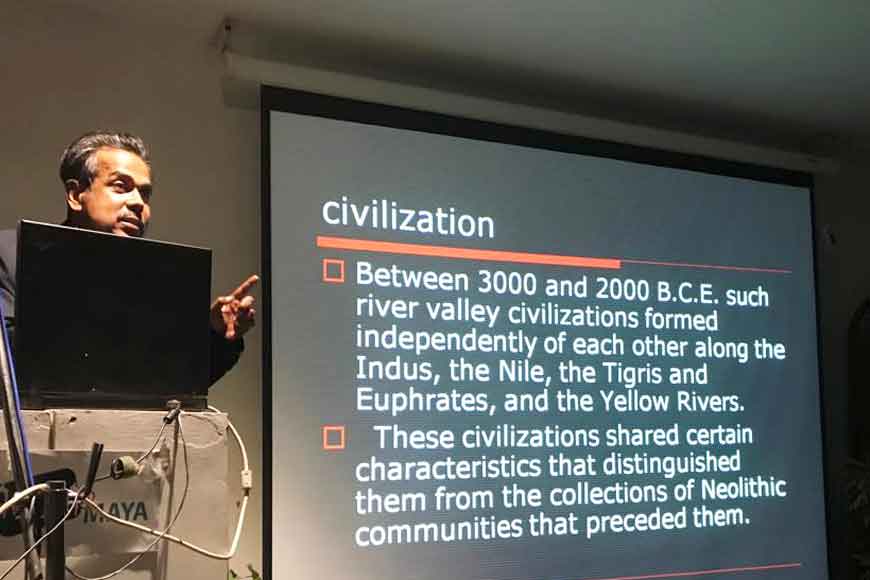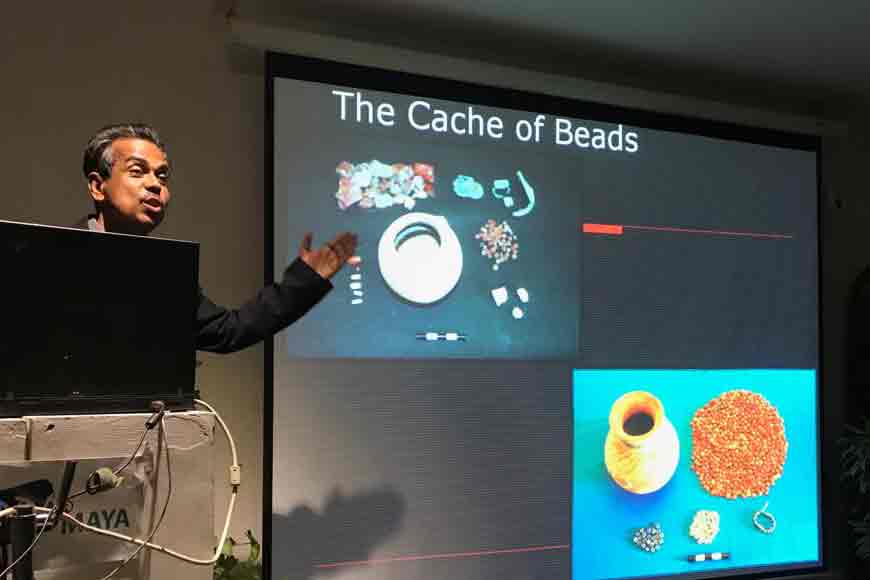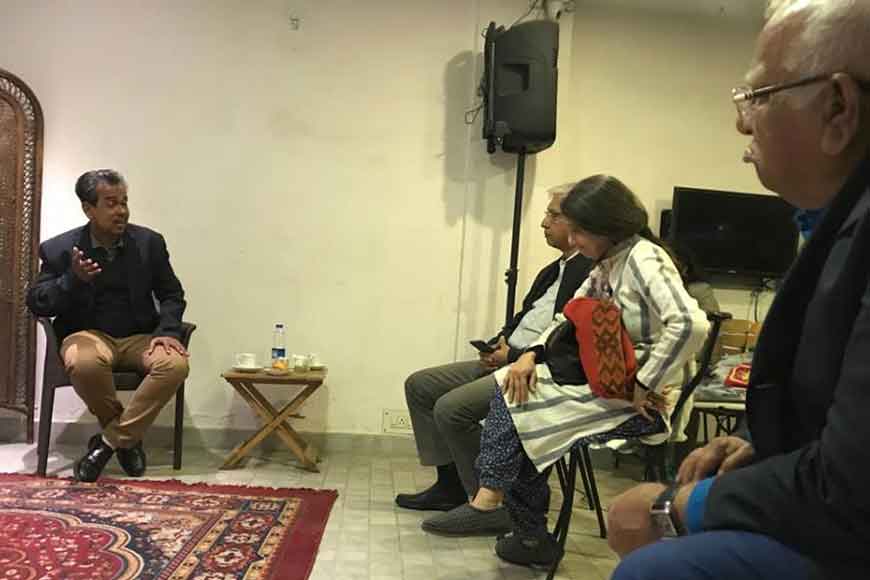Unearthing Indus Valley Civilisation at MAYA Art Space

When addas blend history with data and anecdotes taking you back centuries on the banks of River Indus, to an age when the first dawn of human civilisation flourished, how do you feel? Ecstatic? Curious? Or you are just held in awe? That’s what happened at the Maya Art Space adda last week. Winter evenings are really warming up these days at the MAYA adda, thanks to the varied interests that they cater to at each session. Without confining topics of the adda to just art and science, they have involved history and new finds.
 Rajesh Purohit at MAYA adda
Rajesh Purohit at MAYA adda
Recently a news had hit the headlines, about artefacts being dug up at some Harappan sites of Haryana. Rajesh Purohit, an archaeologist and museologist, was the man behind this find. No wonder the adda was enriching as Purohit took the audience on a historical ride down the ancient civilisation. As Purohit says: “Architecture had been a subject of interest of mine right from the beginning of my career and during my student life also I was interested in this and I did my studies from University in Orissa which is known as the temple city. I pursued my career as an archaeologist. I got a chance to work in North-India, especially in Haryana and Punjab, stayed there and worked with an organization on history of urban development with Kurukshetra Development Institute. Also, worked with restoration and conservation in heritage cities.”
Indus Valley is not just a culture but a civilization, because it had parameters, agriculture, script, fort, sophistication, language, literature, art, religion, philosophy, however it has unfortunately no written history. May be that’s why the dug-up artefacts, be it the famous Dancing Girl or the seals bearing various figurines were so important. But how did the Indus Valley people travel all the way from their settlements in Balochistan to Haryana?
 Rajesh Purohit in an insightful discussion with the audience
Rajesh Purohit in an insightful discussion with the audience
It is indeed very interesting that there was a constant connectivity of the people between the western and eastern part of India. The migration was primarily because of floods and other natural calamities that pushed this civilisation in the later stages to the states of Rajasthan, Haryana and Punjab. Purohit through different data and recently dug up artefacts proved how the migration from South-West to North-East happened with Haryana as the central pivot. No wonder the adda was laced with the richness of knowledge.










